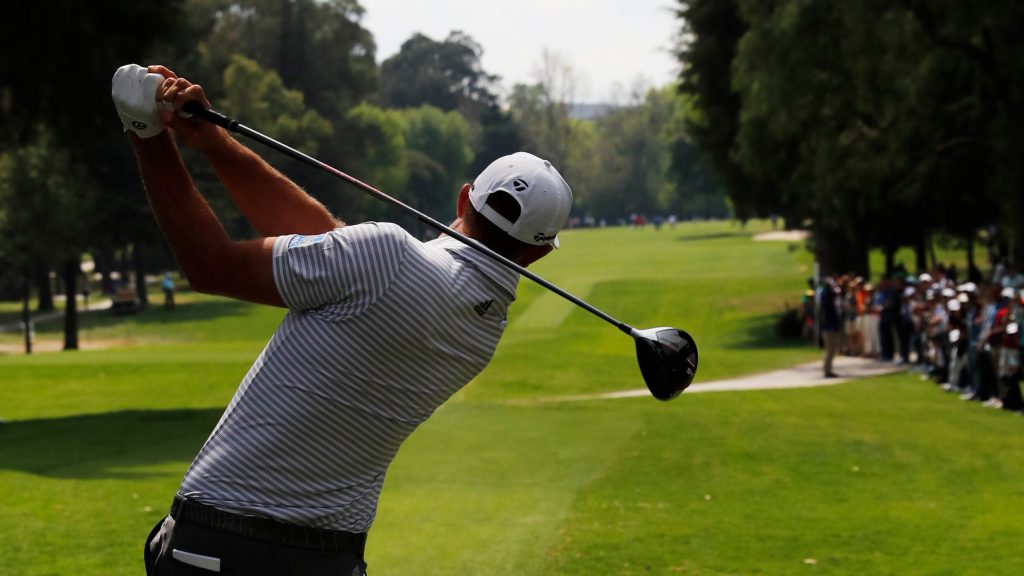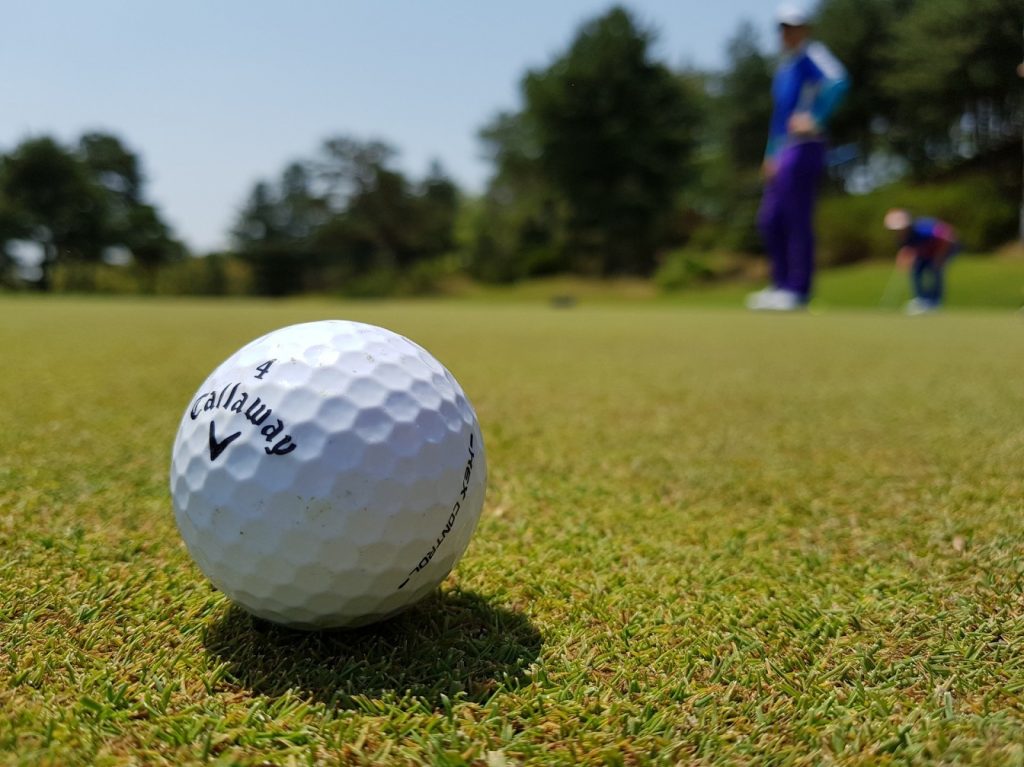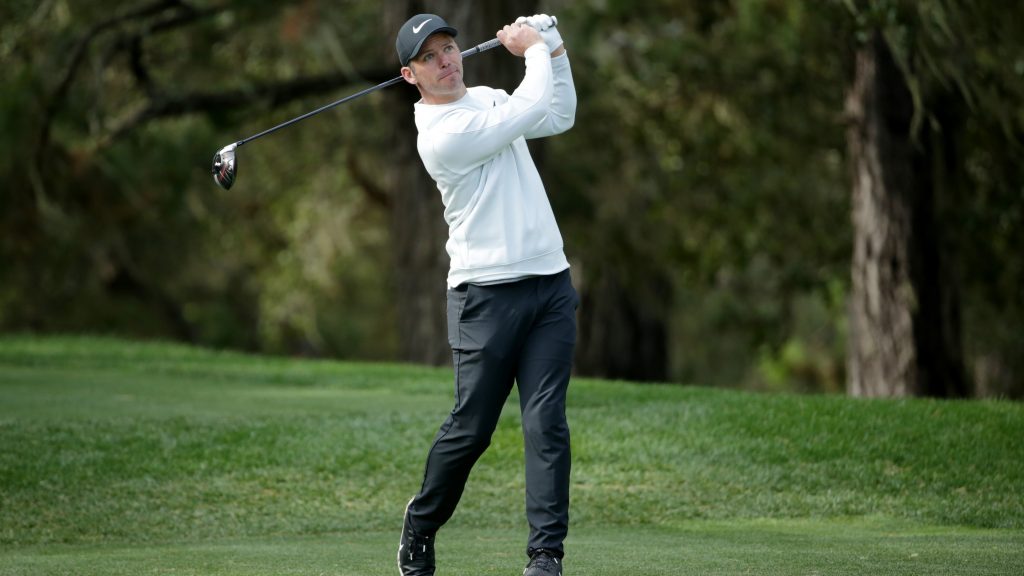
Are you looking for the Rules of Golf for the PGA Tour 2019? Maybe you have questions about DMDs or dropping balls. You might also want to know if the 5-second rule is still in play when searching for a lost ball. There are several new rules that took effect as of January 1, 2019. These are changes outlined by the R&A and the United States Golf Association (USGA).
This helpful guide includes a breakdown of the Rules of Golf for 2019. The guide also includes links to summary charts for the Rules of Golf changes. You can download Official the Rules of Golf app on your mobile device with the links further below. Additionally, included is a section at the end on how players perceive the changes and any questions or concerns they might have about the new changes. And, a few funny thoughts they shared about the new rules.
This guide includes:
- A General Overview of the Rules of Golf.
- The Summary Chart with the Changes for 2019.
- The New PGA Rules of Golf Changes.
- The Official Rules of Golf App and Book.
- How Players Perceive the Rules of Golf Changes.
A General Overview of the Rules of Golf

The PGA is the Professional Golfers’ Association. While the PGA Tour is made up of professional male and female golf players that play in different tours. This organization includes the PGA Tour, the Nationwide Tour and the Champions Tour. The women’s events are run through the LPGA and men’s events are in the PGA. While rules vary slightly with different events, there are basic guidelines that they all maintain.
Golf Etiquette
PGA-sanctioned events use the Rules of Golf for their competitions. This is published through the USGA. General etiquette rules include that golfers will take care of the golf course by smoothing areas over bunkers, replacing divots and playing at a good pace. Golfers are to conduct themselves accordingly, display a disciplined manner and always show sportsmanship and courtesy.
Golf Play
Specific rules are outlined to guide golfers during play with some specific rules for tournament play. Rule-7 states that players are not allowed to practice in between rounds when they are on a tournament course. However, practice is allowed by players when they are at match play events. Other rules serve as general guidance during play. Rule 13-1 states to play the ball where it lies. Rule 14-1, on the other hand, is about how to strike the ball with the head of a golf club.
PGA Cuts
To decide who is cut from the list, in many PGA Tour events, fields are reduced after 36-holes. Players with the 70 lowest scores that include ties can make the cut. However, a rule was enacted in 2008 stipulating that if over 78 golfers made the cut, a second cut would take place. This would include the 70 lowest scoring golfers including ties after 54-holes were played.
PGA Tournament Eligibility
In order to play in a PGA level tournament, players must qualify for this event. Qualification standards can vary and tournaments have leeway with how players can become eligible for the PGA Tour. There are pre-tournament competitions that allow players to qualify. The Champions Tournament states that 7 players are allowed to qualify. While the Bridgestone Invitational a few years ago allowed the top 50 golf players by rankings to play in the PGA Tour. For the most part, players can qualify when they earn a PGA Tour card through a yearly Q-School competition.
The Summary Chart with the Major Changes for 2019
The Summary Chart outlines all the major changes to the Rules of Golf for 2019 in an 8-page summary. These make it easy to reference the rule changes if you have any questions during play. Use the link here for the Rules of Golf summary chart. Or, you can download the Official Rules of Golf app listed further below in this guide. For the Official Rules of Golf breakdown of changes, use this link to the USGA site.
The New PGA Rules of Golf Changes
Alignment
- Players cannot be assisted with alignment for a stroke. They must use this skill set themselves.
- Caddies may no longer stand behind players to help with ball alignment. If a caddie deliberately stands behind a player when the player begins his stance, there is a 2-stroke penalty in the stroke play.
- The exception is the putting green. Penalties can be avoided if players back away and begin again without their caddy behind them. As long as the player backs away and begins again there is no penalty.
- Players cannot put something on the ground like a club to help with stroke alignment. If they do, this is a 2-stroke penalty in stroke play.
Bunkers
- Any loose impediment in bunkers can be touched or moved as long as the ball doesn’t move. If balls move, there is a 1-stroke penalty and balls must be replaced. The former Rule for Stones in Bunkers no longer exists.
- Players can touch sand in bunkers with a club or hand. However, they can’t touch sand in bunkers with practice swings or backswings for strokes. They can’t touch bunker sand deliberately with hands, a rake, club or another object to test its condition for their stroke. They can’t touch sand in bunkers with their club directly in front or behind their ball, except to move loose impediments or any movable obstructions out of the way.
- There is now no penalty if players strike the sand when frustrated or angry or if they lean on clubs in the sand while waiting for their turn.
Clubs & Balls
With a Club:
- If players damage a club even by abusing it, they can continue using it during play and are not allowed to replace the club.
- Clubs can’t be replaced for reasons like cracked driver faces unless damage was the result of natural forces or outside influences.
- Players can have damaged clubs repaired but repairs are only for the original club components. Damages prior to a round can’t be repaired.
- Clubs must conform with new rounds or if a player starts a play-off while in stroke play. They won’t receive a penalty for carrying non-conforming clubs, only if they use it.
With a Ball:
- Players no longer have to state they are lifting balls to see if a ball is cracked, cut or to ID it. They can mark the ball and then proceed with lifting it.
- “Cracked” and “Cut” now replace “Ball Unfit for Playing”. Balls out of shape can’t be replaced. It’s only if they’re cracked or cut and damaged on an existing hole.
Caddies
- Caddies can now lift, mark and replace a player’s ball (if he did the lifting) on putting greens only without prior authorization. Players are still held responsible for breaches to the Rules.
- Caddies can’t align players while they take stances with strokes. Aside from putting greens, players will incur penalties if caddies are standing directly behind them when players start their stances.
Distance Measuring Devices
- The PGA has chosen to adopt a Local Rule for distance measuring devices (DMDs) and these aren’t permitted on any tournament round.
- With a first time breach, players will incur a 2-stroke penalty in stroke play. If there’s a second breach in the same round, they will be disqualified.
- DMDs that don’t have elevation changes are permitted for PGA Tour pre-tournament Pro-Ams, stages of Q-school, but not finals and a qualifying round in the Open.
Dropping a Ball
- Players must drop balls straight to the ground from the height of their knees.
- The height of the knee references when the player is standing still.
- Balls should fall completely straight to the ground with no spin, roll or throw.
- Balls shouldn’t touch any part of the equipment on a player or their body before the ball lands on the ground. Balls that roll up against equipment or the foot of a player accidentally are considered in play.
A second ball drop:
- Balls that are dropped have to fall in and rest in designated relief areas.
- Balls that roll out of relief areas should be dropped a second time. If it then rolls from the relief area again, players should put the ball on the spot where it first hit the ground on that second drop.
- If the ball still won’t stay at rest, players should place it on the drop spot again and if it still rolls, place it near the spot where it will not move but not closer to the hole.
- When drop zones are used, balls should drop and come to a complete stop in designated drop zones.
Drop Options for Unplayable Balls
- During Stroke and Distance Relief: Players should assess where a previous stroke had been played. They should then drop their ball a club length in that particular spot but not closer to the hole.
- During Back on the Line Relief: Players can drop a club length in a relief area instead of exactly on lines as in the past.
- Players can travel back to lines as much as they would like and pick a point to drop with a club length of the point but not closer to the hole. Players can target points on the line with a tee or coin. Balls once dropped there can’t move beyond that point.
- During Lateral Relief with 2 club lengths: If balls are unplayable, the balls must stay positioned at the 2 club length relief areas once dropped there.
- Balls cannot roll 2 club lengths from the stop where they hit the ground area.

Embedded Balls
- Relief procedures have changed for embedded balls.
- Relief areas begin at the location directly behind where balls are embedded. Players should drop their ball in a club length relief area but not closer to the hole.
- Players don’t have to state to others that they are marking and lifting their ball to examine if its embedded.
- Balls aren’t embedded if they rest beneath ground level as a result of anything outside the player’s last stroke like when balls are dropped and players take relief.
- Balls can be substituted and dropped if players take relief. Original balls can be used but this isn’t required.
Lost or Provisional Ball
- Searching for balls is now 3 minutes, not 5 minutes. The time begins when a player or caddy starts their search. If they find the ball, the provisional ball should be discarded.
- When a ball search begins, players don’t incur a penalty if the ball is accidentally moved in a search by the caddy or player. Move the ball back to an estimated spot.
- Players can go back to where their balls were last played and use provisional balls if the original isn’t found.
- Players still need to state that their ball is now a provisional ball. They can state “provisional ball” or “ball provisionally”.
Penalty Areas
- Penalty areas are new names for water hazards and they are still marked red or yellow.
- In penalty areas, players can move a loose impediment, ground their clubs lightly behind balls, touch the ground or water and take practice swings.
- Opposite margin reliefs from red penalty areas aren’t available. This should be noted in a local rules sheet weekly for each red penalty area.
- Players can’t take relief from abnormal ground conditions with embedded balls and immovable obstructions within penalty areas.
Penalty Eliminations
- Accidental double hits will no longer incur a penalty.
- An accidental deflection will no longer incur a penalty; balls can play where they lie.
- When looking for a ball, there’s no penalty if balls are moved by caddies or players. Balls are to be replaced but not dropped.
- If moving balls hit caddies, players, equipment or flagsticks (attended or removed), there’s no longer a penalty.
- If it’s deliberate by players or their caddies to use equipment to stop a moving ball, they will receive the penalty.
- If ball-markers or balls accidentally move on the putting green, there’s no penalty.
- Players can carry non-conforming clubs with no penalty but will receive a penalty if they use one.
- If balls strike a leaf that’s moving on putting greens, balls will play where they lie.
- If balls are moved by outside influences, replace the ball even if the spot isn’t known. It shouldn’t be dropped.
Preferred Lies
- A ball’s position can be marked before it is lifted but this isn’t a requirement. Players can lift their balls and put the ball within a club length of its original location but not closer to the holes. Balls can also be substituted if lifting under Local Rules.
Putting Greens
- Players or caddies should make prompt repairs to fix damages on putting greens.
- Damage includes any type of damage caused by outside influences or people that includes shoe damage, spike marks, ball marks, turf plugs, old hole plugs or indentations and scrapes from the flagstick.
- It’s not necessary to fix areas where there are grass disease, imperfections natural wearing or aerated holes.
- Lines of play on putting greens shouldn’t be touched. This includes lines of putting. Lines can’t be improved aside from general repairs, meaning players can’t clear new paths to the hole.
- If a ball moves on the putting green once players lift and replace it, balls should be replaced on the original location. If players don’t know, they can estimate it. This can include if balls are moved by winds.
Reading materials about greens’ limitations:
- Limitations on mapped Greens’ Books includes green diagrams from traditional yardage books. Images that display putting greens during the round are limited to 3.8-inch up to 5-yards. Greens’ or yardage books have size limits et at 7-inches by 4.25-inches.
- Players and caddies can use written or hand-drawn information but only from a paper or book that meets the size limit. And, aside from regular glasses, players aren’t allowed to use a magnification of any kind on putting greens.
Flagsticks:
- Players can putt with flagsticks in the hole but should decide this before their stroke.
- If balls hit flagsticks in a hole before a stroke or if balls hit flagsticks that are removed or attended there’s no penalty.
- If players putt when flagsticks are in, they can’t move the flagstick after their stroke to affect where moving balls stop. They can only move it if it looks like the ball might hit the flagstick.
- If balls rest next to flagsticks in a hole or if part of the player’s ball is underneath the lip level, balls are looked at as holed despite not being under the surface. Players don’t have to remove flagsticks for balls to fall in. Players can proceed to pick up their balls.
Relief Areas
- Relief areas are where players drop their ball if they take relief.
- Relief areas are equal to the longest club players carry aside from putters.
- Regardless of the club used for measuring, balls have to rest within the longest club space. Putters and sand wedges provide smaller relief areas.
- Relief areas of one club length are standard for every procedure unless players use two club length lateral relief options. This would be from red penalty areas or with unplayable balls.
- This change ensures relief areas are consistent.
- Relief areas are one club length for dropping balls from immovable obstructions, wrong putting greens and embedded balls. These also apply to Stroke and Distance Relief options under a penalty and Back on the Line Relief under a penalty.
- If taking a penalty or free relief, the player’s original ball or a substitute should be dropped in the relief area.
Temporary Immovable Obstructions (TIO) Rule
- TIOs can be treated as immovable obstructions if a physical obstacle exists if players want. This simplifies when players take relief.
- If players have line of sight interference and physical interference, they can select either procedure. When they make their selection, they can’t change their minds.
The Official Rules of Golf App and the 2019 Rules of Golf Book

Want to download the Rules of Golf 2019 app? Or, do you want to buy the Rules of Golf Book for 2019? Here’s information on both:
2019 Official Rules of Golf App
The app is available in the Google Play Store and the Apple Store. It was designed with both an online and offline version. Download the portable reference to the 2019 USGA Rules to your phone or other mobile device. Price: Free. Updates with new rules are effective as of January 1, 2019. Have a question about the Rules of Golf app? Contact the USGA at: [email protected].
Features include:
- Rule quizzes.
- Video demonstrations.
- Rules of Amateur Status.
- Rules, interpretations and diagrams.
2019 Official Rules of Golf Book
The Official Rules of Golf Book for 2019 is available for purchases through the USGA Publications. There are 3 books for 2019.
These include:
The Player’s Edition of the Rules of Golf (Effective January 2019). Price: Free.
The Rules of Golf (Effective January 2019). Price: $5.00.
The Official Guide to the Rules of Golf (Effective January 2019). Price: $15.95.
How Players Perceive the Rules of Golf Changes

Golfers of all skill sets are thinking about how the rule changes will affect their play.
- Vijay Singh noted, “They don’t change rules just because it’s going to make it difficult. I think it’s going to be easier. We just have to get used to it. It’s going to take time for us to learn it.” And, some aren’t concerned about the rules.
- Jack Nicklaus said, “I’m not going to play golf. I don’t care about rules right now. My rules are about the same as when I finished. If I don’t like the shot, I hit another one. If I hit the first putt and it’s not very close, then I just pick it up. That’s the rules I play. It’s great.”
Other golfers are chiming in their questions, comments and concerns online:
“The 3 best ones: fixing spike marks on greens, 3 minutes to locate lost ball, dropping from knee high. :)” S.D.
“I would like to see the “preferred lies” procedure changed to lift, clean and drop–especially since the drop is now from knee height. I feel this would retain the randomness aspect which is so much a part of the game. Allowing pros and highly skilled amateurs to place the ball seems like too much of an advantage.” B.
“Dropping from Knee high damn some days I can’t bend that far :P” C.W.
“The best new rule for recreational golfers by far is the double hit not being a penalty. It gets pretty awkward when you know someone double hits it and they don’t say anything about it.” J.B.
“Why are DMDs still illegal? It would speed up play simply in the calculation and time taken to walk off yardages(amongst other reasons). I realize that some pros have come out against the idea of DMDs but people are creatures of habit. Once the DMDs were allowed, it wouldn’t take a full year for all the pros to come around to the idea once they see how much time they are saving during the round.” K.B.
” I must admit I don’t like seeing pros read a slope book for the greens rather then just reading the putt directly! That’s a skill of the game, to read the break.” A.M.
“Interesting times. Agree that there are a lot of changes to manage and understand. Still surprised that the tour players cannot use a DMD during an event. Cant see the point of that. Never understood why it was a 2 stroke penalty to hit the pin with a putt so I am glad that they have dumped that.” S.
“I heard If you hit a tee shot and the ball stay inside the tee box you can tee again without a penalty?” P.J.
Comment to P.J. above: “To be honest, if I did that I’d just pack the game in. :)” C.R.

Now, if you’re in Las Vegas and are looking to expand on your Golf skills like the pros in the PGA tour visit Chimera Golf Course located in Henderson, Nevada. Designed by Ted Robinson, Jr. in 2003, it sits on 6,906 yards. With forgiving fairways in a playable desert landscape, it offers challenges from any tee. Players can enjoy other activities that include foot golf, golf boards and a bite to eat at Slice 19. With unparalleled views of the Las Vegas Strip, book your next tee time at Chimera Golf Club today!

